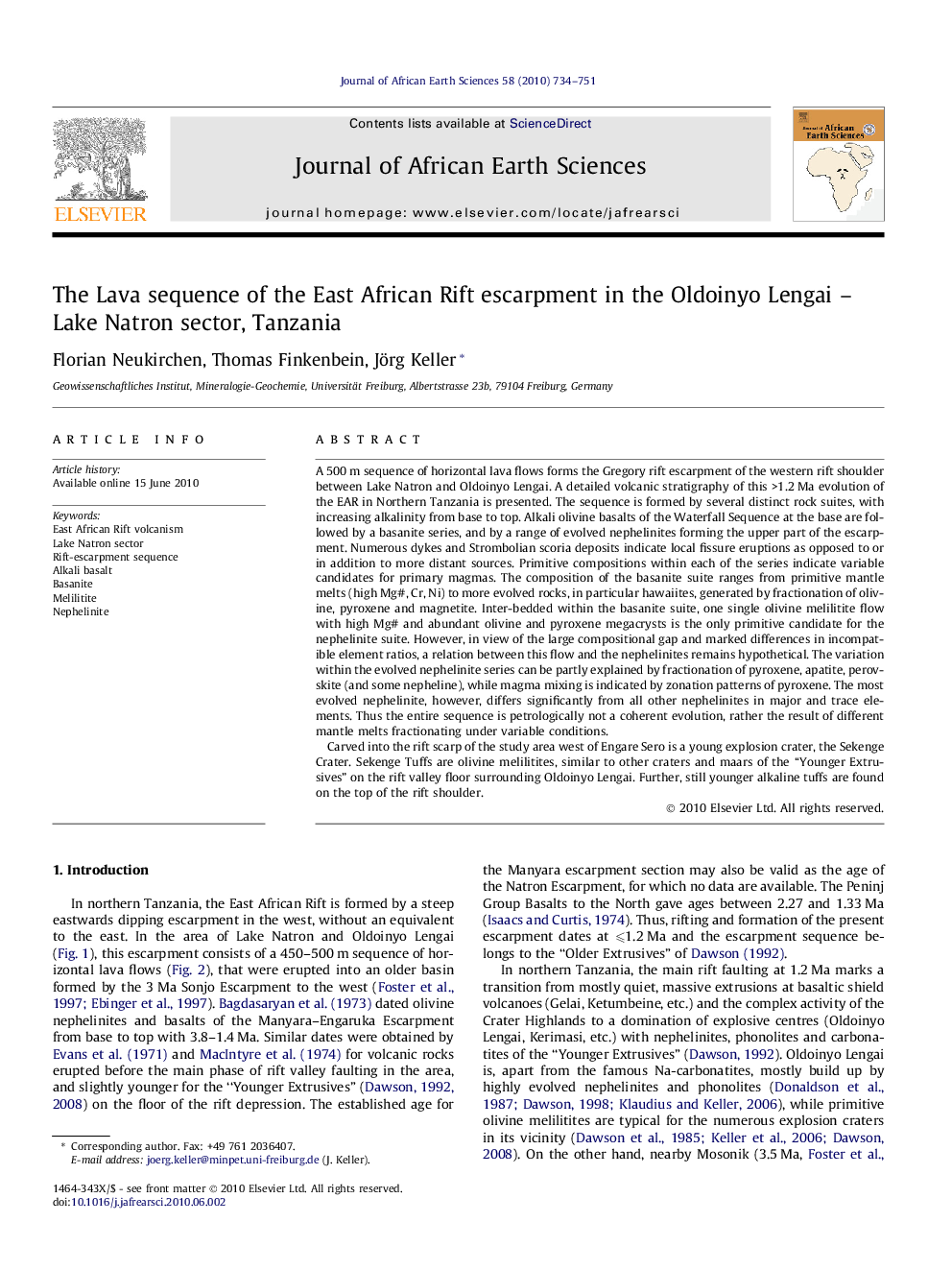| Article ID | Journal | Published Year | Pages | File Type |
|---|---|---|---|---|
| 4729263 | Journal of African Earth Sciences | 2010 | 18 Pages |
A 500 m sequence of horizontal lava flows forms the Gregory rift escarpment of the western rift shoulder between Lake Natron and Oldoinyo Lengai. A detailed volcanic stratigraphy of this >1.2 Ma evolution of the EAR in Northern Tanzania is presented. The sequence is formed by several distinct rock suites, with increasing alkalinity from base to top. Alkali olivine basalts of the Waterfall Sequence at the base are followed by a basanite series, and by a range of evolved nephelinites forming the upper part of the escarpment. Numerous dykes and Strombolian scoria deposits indicate local fissure eruptions as opposed to or in addition to more distant sources. Primitive compositions within each of the series indicate variable candidates for primary magmas. The composition of the basanite suite ranges from primitive mantle melts (high Mg#, Cr, Ni) to more evolved rocks, in particular hawaiites, generated by fractionation of olivine, pyroxene and magnetite. Inter-bedded within the basanite suite, one single olivine melilitite flow with high Mg# and abundant olivine and pyroxene megacrysts is the only primitive candidate for the nephelinite suite. However, in view of the large compositional gap and marked differences in incompatible element ratios, a relation between this flow and the nephelinites remains hypothetical. The variation within the evolved nephelinite series can be partly explained by fractionation of pyroxene, apatite, perovskite (and some nepheline), while magma mixing is indicated by zonation patterns of pyroxene. The most evolved nephelinite, however, differs significantly from all other nephelinites in major and trace elements. Thus the entire sequence is petrologically not a coherent evolution, rather the result of different mantle melts fractionating under variable conditions.Carved into the rift scarp of the study area west of Engare Sero is a young explosion crater, the Sekenge Crater. Sekenge Tuffs are olivine melilitites, similar to other craters and maars of the “Younger Extrusives” on the rift valley floor surrounding Oldoinyo Lengai. Further, still younger alkaline tuffs are found on the top of the rift shoulder.
